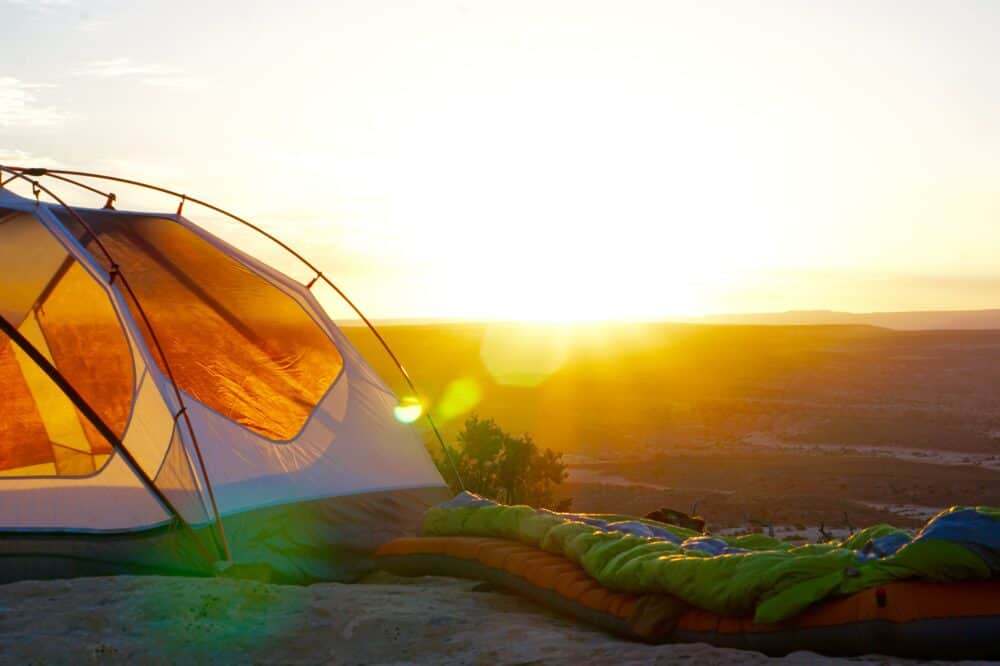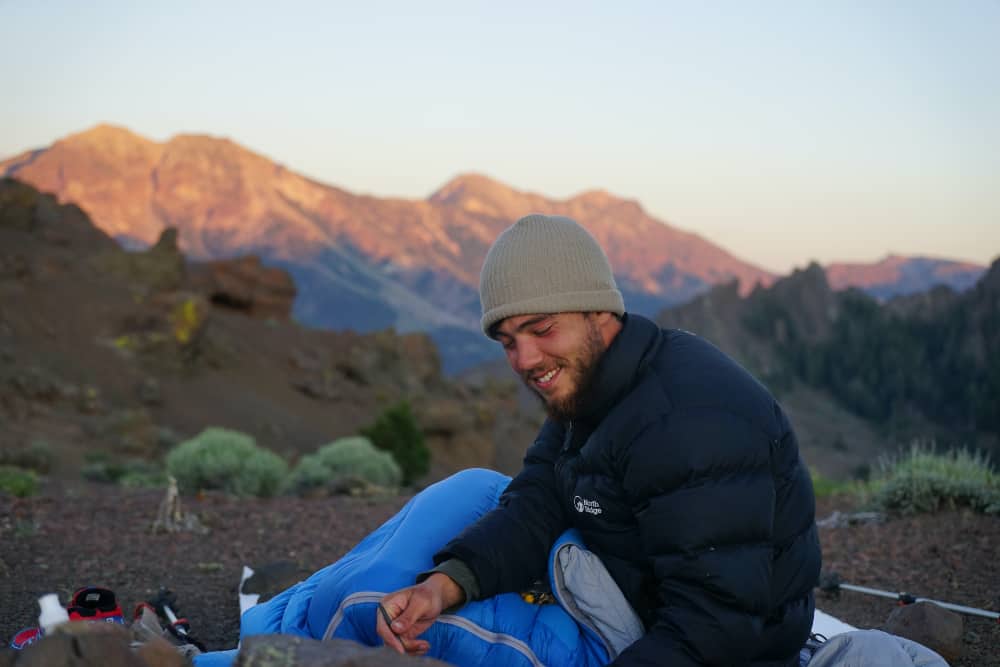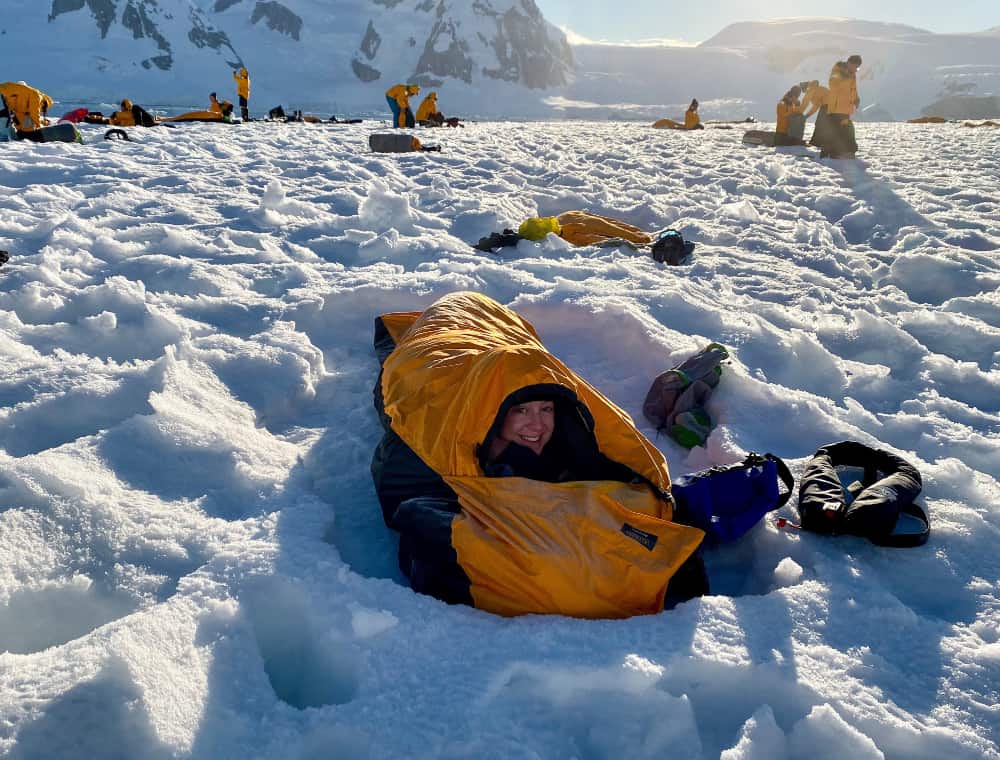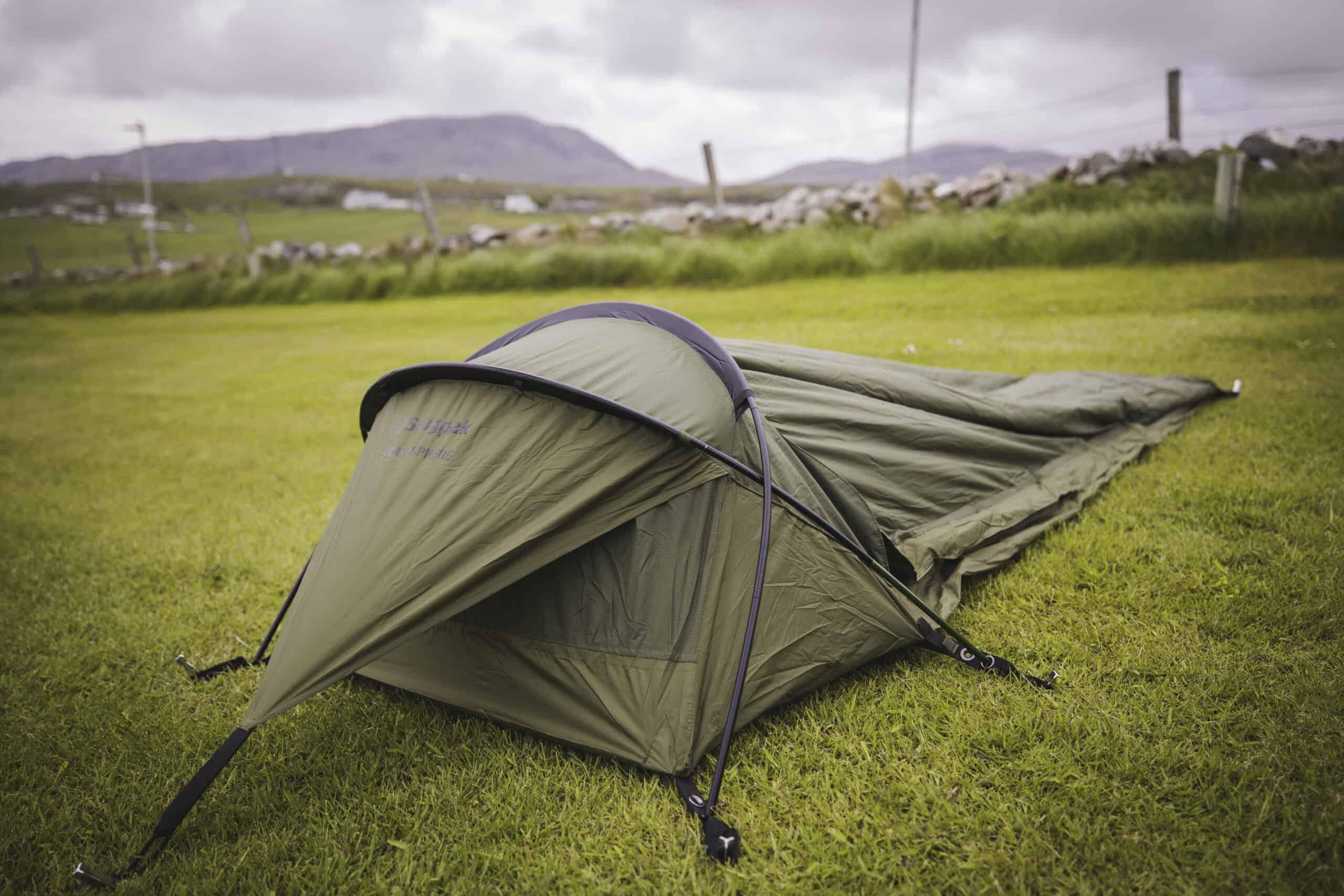There is romanticism in sleeping under the stars. It is the ultimate outdoor experience, as a person lets go of the everyday barriers humans put between them and nature. Yet nature isn’t just falling stars and the chirp of crickets, but mosquitos and storms. So, is a bivy enough, or are tents better?
Bivy sacks are perfect for minimalist camping or stuffing into a pack in case a day hike becomes an emergency. However, tents give you more elbow room and keep your gear dry. Waiting out a storm in a bivy is doable but a much more miserable experience than doing it in a tent.
Ideally, a committed outdoor enthusiast should have both a bivy and a tent. A bivy can be kept in a trunk and be excellent in emergencies and spontaneous overnights. Whereas a tent provides privacy, space, and keeps your gear dry in poor weather. Pairing a bivy with a tarp is a nice middle ground.
Trying to weight up a bivy vs tent? Before you do – find out how some of our favourite bivy sacks, such as the Snugpak shown above, rank in our list of the best bivy sacks.

Who Uses Bivy Sacks Instead Of Tents?
Even people who don’t venture out of a city are familiar with tent camping. Tents are everywhere, featured in movies, TV, books, and a staple of most concert festivals. But the idea of turning into a human burrito via a bivy sack is less well known.
Even people who have heard of bivy sacks often think of them as something mountaineers do in emergencies. But bivy sacks have uses beyond sleeping on the edge of icy rock.
For example:
- Cowboy campers
- Touring bicycle campers
- Emergency day hiker gear
- Speed hikers (people trying to complete a long-distance route fast, often to break a record)
- Snow cave campers
- Backpackers that need to reduce their load
- Multi-day climbers
- Mountaineers
- Emergency gear kept in a car
Are Bivy Sacks A Sleeping Bag Or A Tent?
Like tents and hammocks, bivy sacks have multiple styles. Most resemble bags, but some types resemble a single-person tent. They are meant to be used over a sleeping bag, raising the warmth an average of 10F (5C).
Like a tent, bivy sacks provide shelter. Some are mostly netting, designed to keep out most insects, such as mosquitos, and prevent a snake or other animals from joining you in your warm, cozy sleeping bag. But most bivy sacks protect the user from the elements, such as rain and wind.
However, unlike a tent, the bivy sack is designed to protect the human occupant and not much more. Thus, bivy sacks won’t cover much gear. Usually, there is a bit of room to stash a few belongings in there, but not everything.
Nor does a bivy sack provide much privacy. Some men boast about figuring out how to pee while barely unzipping their bivy and sleeping bag. But the majority of women will probably be unsuccessful at such a stunt.

What Are Advantages Of Using A Bivy Sack Instead Of A Tent?
Bivy sacks don’t attract instant fans. Nor do bivy sacks in a storm have the ambiance as the tent TikTok videos do. But bivy sacks do have many advantages over tents.
Bivy Sacks Allow You To Sleep Under The Stars Mosquito Free
Sleeping under the stars on a gorgeous summer night sounds fabulous. That is until you think about mosquitos, snakes, and other unsavory critters. However, there are cowboy camping enthusiasts that assure you the bloodsuckers won’t bother you, provided you’re tired enough and drained your hip flask.
To be clear: these cowboy camping enthusiasts are not claiming that exhaustion and the contents of a hip flask keep mosquitos away. Instead, their point is that you are unlikely to wake up as insects buzz in your ear and pierce your flesh.
However, for those looking for a sober option or at least one with less itch, there are bug bivy bags.
Bivy Sacks Don’t Take Up A Lot Of Space
Bivy sacks don’t take up much room. Their footprint is only slightly bigger than the person inside them and doesn’t require tent pegs or guidelines. Nor do you have to use a tarp or rain fly with a bivy (although you can for added comfort). Thus, they can be used in places where tents don’t fit.
In addition to bivy sacks small footprint on the ground, they also take up less space than your average tent. Yes, tents are being made smaller and lighter, but their poles and pegs take up additional room. Since traditional bivy sacks don’t have these accessories, they require less packing space.
Bivy Sacks Don’t Weigh Much
Bivy sacks don’t weigh much, which matters on certain outdoor adventures. Getting a tent’s pack weight under a pound is very difficult.
For example, one of the lightest tents available is Big Agnes Scout 1 Platinum. It boasts that it is less than a pound. However, to get the tent to that low weight means not using parts of it. If you bring the whole tent, then its packed weight is 1lb 1 oz. Which is still very small, but not the same as proclaimed.
However, bivy sacks can get under a pound, even in their packed weight. For example:
- Black Diamond Twilight Bivy Shelter: 13.5 oz
- MSR Quick Pitch Pro: 8.9oz
- MSR E-Bivy Ultralight: 7oz
Bivy Sacks Are Quick And Easy To Setup And Put Away
Bivy sacks are almost as easy to use as a sleeping bag. Typical setup includes:
- Remove bivy from backpack
- Shake out
- Get inside
- Zip
What makes them slightly more complicated than sleeping bags is:
- You usually have to stuff your sleeping bag into the bivy bag, which can be somewhat awkward
- Bivy bags, especially older models, can be prone to condensation
- Some have fancy “tent” like features, such as sleep padding or poles, which add setup time
However, even tent-like bivy sacks typically take less time to set up and take down than a regular tent.
Bivy Sacks Make Stealth Camping Easier
There can be camping situations where a person doesn’t want to draw attention to themselves. In these instances, a bivy sack makes it easier to get some rest without being disturbed by other human beings.
In addition, some areas, typically urban, will allow people to sleep “rough” but not in a tent. A bivy sack keeps a person legal without exposure to the rain, wind, and other uncomfortable weather.
Bivy Sacks Are Relatively Cheaper
Bivy sacks are relatively cheaper than their backpacking tent counterpart. So yes, there are tents out that are cheaper than a top-quality bivy sack. But those cheap tents are not more affordable than a basic, cheap bivy.
Here are some like-for-like examples, to illustrate the cost savings of a bivy.
Even those that prefer tent camping might find a bivy and tarps system more affordable. Most of the money is spent on a 3-4 season bivy, and then just use what’s left to spring for two tarps. One tarp is used as a footprint, the other as the “roof,” and you’ve got an affordable setup with privacy without sacrificing warmth or adding too much weight.
Bivy Sacks Can’t Be Blown Over
A traditional bivy sack can’t be blown over. It’s a sack that is low to the ground, like a sleeping bag. But, of course, it can blow away if you are not in it. But you will not find the top “blown off” while sleeping. Hence, bivy sacks are adored in certain alpine and rock climbing conditions.
Bivy Sacks Are Individual Cocoons
Bivy sacks allow a person to sleep undisturbed. On the other hand, ultralight two-person backpacking tents require the occupants to fit in like sardines. Every shift or twitch by one person is immediately felt by the other.
Even those who love hammocks swiftly realize that a 2-person hammock only provides excellent sleep if used by one person at a time. The romance of being cozy together is lost the second one of the occupants needs to pee or scratch an itch.
Bivy Sacks Can Be Taken In Hand luggage
Air travel rules are becoming increasingly complicated and fickle. Thus, many modern rules even see a tent peg or pole as a “threat.” In the past, a traveler simply checked their bag; the only annoyance was the additional wait at baggage claim. But these days, checking luggage can be pricy.
However, many bivy sacks can be transported in hand luggage. You just need one that is free of poles and pegs while also being lightweight. All of which is doable. If you want a little extra shelter and privacy, just buy a cheap tarp, string, and some pegs once you’ve landed.

Will Bivy Sacks Replace Tents?
Tents are hardly under threat from bivy sacks. Tents are roomier, offer privacy, and can sleep more than one person. They also can act like a small cabin, allowing people to move around and do things when it is raining. For example, plenty of four-person tents provide enough room for some yoga.
The tent’s biggest competitor is actually the hammock. Hammocks bring the advantage of better sleep, which is not something a bivy can claim. Also, while hammocks lack privacy, just like bivy bags, hammock campers just use rain flies, tarps, and footprints to fix this.
Bivy users can use the same equipment as hammocks to create privacy, but they don’t have the bonus of “better sleep.” Hanging from certain bivy bags is possible, but it isn’t promoted as a method of “better sleep” but as a “better than nothing” or “better than dead.”
“Better than dead” is valid. But when a person isn’t constrained by terrain, budget, packing space, or weight, the bivy is unlikely to beat out a hammock or tent. People like to be comfortable.
